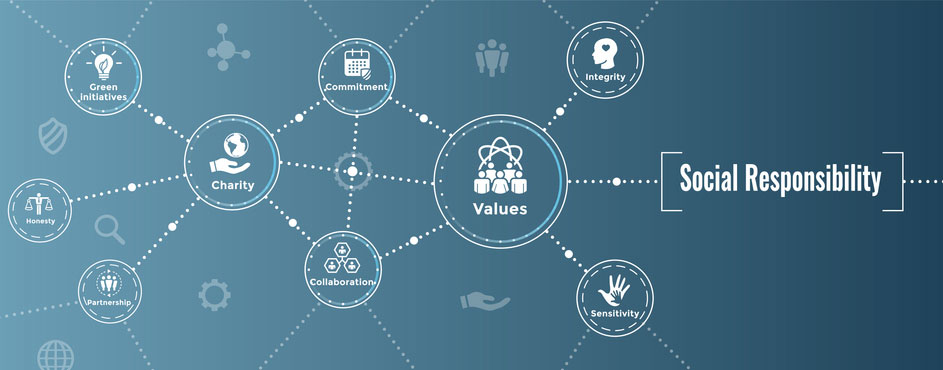Written by Sam Medley

Technology-assisted social work services are advancing the field and capabilities of social work professionals. They include any social work services that involve the use of computers, mobile phones, tablets, video technology, social media, text messaging, instant messaging, email, internet, and chat rooms.
In anticipation of the changes these forward-looking tools and interventions will bring to the field, the National Association of Social Workers Code of Ethics includes a section that encourages social workers to consider the effects of technology on their ability to:
- Maintain confidentiality
- Facilitate informed consent
- Set professional boundaries
- Preserve professional competence
- Keep accurate and secure records
The growing use of technology in social work has led to many discussions about the ethical challenges presented social workers. One such challenge in California — and throughout the country — is the digital divide. The technological and economic inequities that exist in the state are a key consideration for social workers as they develop and implement strategies to support their clients.
Challenges and Disadvantages of Using Technology in Social Work
The state is working to shrink the digital divide among Californians, including funding research and updating policies for telehealth usage among low-income and undocumented Californians, digital equity for California students, and other areas in which the digital divide affects people and communities.
For example, the Public Policy Institute of California believes in a “California with effective, efficient, and equitable public policies that improve the well-being of our state’s people, communities, and environment.” Its vision includes the elimination of barriers to digital access across California’s diverse communities.
The editors of “Social Work in an Online World: A Guide To Digital Practice,” David A. Wilkerson and Liam O’Sullivan, defined “digital equity” as the “social justice principle of technology access as a human right” and explained that it included digital literacy and digital citizenship
According to Wilkerson and O’Sullivan, the three levels of technology equity are:
- Device and infrastructure accessibility
- Technology literacy and skills
- Economic, social, cultural, and health outcomes that require digital equity
The book’s contributors echo the guidance from experts in the field, warning that the positive impact of technology on social work practice must be accompanied by standards for “social justice principles of digital equity and data justice.”
California Takes On ‘Harnessing Technology for Social Good’
The American Academy of Social Work and Social Welfare launched an initiative called the Grand Challenges in Social Work to tackle the most pressing issues in the field of social work in the early 2000s — one of which is “harnessing technology for social good.”
The California Department of Health Care Services (DHCS)
Information technology projects at DHCS include:
Comprehensive Behavioral Health Data Systems Project. This project is intended to identify technology solutions for data collection, analysis, and reporting.
Statewide Automated Welfare System: This case management system exists to support and automate public assistance and social services for Californians, including Medi-Cal, Foster Care, and Refugee Cash Assistance, among others.

The Future of Work Commission
In August 2019, the Future of Work Commission was established to “study, understand, analyze, and make recommendations regarding the kinds of jobs Californians could have in the decades to come; the impact of technology on work, workers, employers, jobs, and society; methods of promoting better job quality, wages, and working conditions through technology; modernizing worker safety net protections; and the best way to preserve good jobs, ready the workforce for the jobs of the future through lifelong learning, and ensure shared prosperity for all.”
During the October 10, 2019, Convening 2 in Stanford, California, Co-Director of Stanford’s Human-Centered AI Institute and member of the California Future of Work Commission Dr. Fei-Fei Li spoke on the importance of human-centered, inclusive technological development.
“We can aspire to lead on that front,” Dr. Li said. “We look to agencies like the National Science Foundation and others to support efforts to ask questions like, what are the ethical guidelines here? What are the human factors that are considered in the design of these projects? Do we have an Institutional Review Board equivalent? How are we measuring human impact and social impact, what are the metrics of privacy, fairness, inclusiveness and diversity?”
Institute for the Future
The Institute for the Future in Palo Alto, California, leverages workshops, foresight training, signals-based forecasting, ethnographic foresight, and experts to achieve a future where everyone has the ability to use “futures thinking” to create a more inclusive, sustainable, and equitable society.
Social Work Health Future Lab
Portland State University School of Social Work Professor Dr. Laura Nissen, LMSW, inspired and supported by California-based IFTF, founded this national 18-month program with funding from the Robert Wood Johnson Foundation. Designed around the social determinants of health, the program was created to give health-related social workers the skills for facilitating a “healthier and more equitable future using futures thinking and foresight practice.”
IFTF Digital Intelligence Lab
Social scientists at IFTF’s Digital Intelligence Lab focus their research on technology and society, studying the effects of new technologies on the dissemination of socio-political communications to individuals and communities.
This research is specifically relevant to the Provision of Information to the Public section in the Technology Standards in Social Work Practice, which states that social workers who communicate information to the public through digital media must adhere to the ethical standards of the social work profession.
What Are the Standards for Using Technology in Social Work?
The standards for technology and social work practice were developed by the National Association of Social Workers, the Association of Social Work Boards, the Council for Social Work Education, and the Clinical Social Work Association.
The standards include:
- Provision of Information to the Public
- Designing and Delivering Services
- Gathering, Managing, and Storing Information
- Social Work Education and Supervision
These standards guide the use of technology in social work and align with the established ethical responsibilities social workers have to the public.
Because individuals and communities have unique needs, social workers must respect the views specific cultures have regarding technology and the learning styles of individuals. They must also consider the many risks inherent in any technology used in social work practice, including cyberbullying, identity theft, and addiction to technology.
How Do Social Workers Use Technology?
Social work practitioners can use technology to address everything from communicating with clients and health care providers to managing client records and other data.
A recent review in the Journal of Social Work noted that social workers are increasingly using digital technology and online platforms. The review found several benefits to using technology in social work practice, including the ability to provide services to the larger population and making services widely available, and concluded that social workers should have more support to access flexible, efficient, and creative tools that will improve the quality of their services.
Telehealth platforms offer more opportunities for people to access care services than ever before, and technology can provide a reassuring and comfortable for clients in child protection and domestic violence settings to engage with social work practitioners, allowing for rapport building and the ability and motivation to stay connected.

Technology-enhanced social work activities include:
- Data management
- Meeting and interview recording (stored for reference)
- Communication
- Information sharing
- Research
- Language translation
- Client assessment
- Professional development and employment opportunities
- Multiculturalism
- Telehealth and accessibility
- Virtual education
The Council on Social Work Education’s 2022 Technology Summit focused on information literacy, telehealth practices, and leveraging technology to advance social work curriculum. The following year, the 2023 CSWE Annual Program Meeting included a track titled “Technology in Social Work Education and Practice,” which explored the role of information and communication technologies in the field.
The continuing focus on technology in social work education suggests that social work practitioners and LCSWs will have access to new technologies and implement advanced technology-assisted interventions in the near future.
Apps for Social Workers
There are software applications for social workers to boost efficiency, help them develop self-care routines, engage clients, and stay abreast of trends in the field.
For example, the Substance Abuse and Mental Health Services Administration (SAMHSA) offers apps for bullying and suicide prevention, and productivity tools allow social work professionals to support people, families, and communities throughout California, regardless of their physical location.
The following are just a sample of the applications for enhancing and expanding social work practice:
- Self-care
- Thrive Social Work
- Happify
- Balance: Meditation & Sleep
- Client apps
- Google Translate
- Envision
- TapTapSee
- Kids
- Breathe, Think, Do with Sesame
- The Monster at the End…
- The Happy Child Parenting App
- Mental health apps
- Suicide Safe
- PTSD Coach
- Daylio Journal – Mood Tracker
- Health Care
- AA Big Book
- WebMD
- Pain Coach
- Productivity
- Microsoft Teams
- LastPass
- Evernote
- Notion
- Asana
- HabitNow Daily Routine Planner
- Zoom
- Education and Development
- Social Work Mentor
- The Savvy Social Worker
- Data Management
- Sociants: Social Worker App

Using a virtual meeting platform, such as Zoom, a social worker based in Northern California can provide social welfare services to an individual in Los Angeles. This type of technology expands access to care for millions of Californians.
California Universities Teach Technology Skills for Social Workers
MSW programs in California emphasize the changing landscape of social work, especially in the post-COVID-19 era.
The University of Southern California’s Suzanne Dworak-Peck School of Social Work, for example, focuses on “future-forward areas such as artificial intelligence and neuroscience that are pushing the envelope in prevention and intervention and providing more interdisciplinary opportunities for social workers.”
UC Berkeley’s Digital Health Equity And Access Lab under the School of Social Welfare strives to “develop and disseminate innovative technologies to improve health and mental health in low income and underserved communities.”
Additionally, Risk Resilience Research at UC Berkeley oversees programs that explore the use of technology in social work and mental health practice.
Initiatives of UC Berkely include a game to prevent aggression and promote choice among youth and a system that uses technology and targeted services to break the cycle of mental health crises in high-risk people.
2022 US Bureau of Labor Statistics job market trends and salary figures for child, family, and school social workers, healthcare social workers, mental health and substance abuse social workers, and social workers (all other) are based on national data, not school-specific information. Conditions in your area may vary. Data accessed December 2023.
Discover more about other social work specializations in California.





